#Chiton
Text

Did you know that Chiton (specifically the wandering meatloaf chiton) produce the hardest known biologically made material? Their shells are also covered in microscopic lenses that combine to almost make their body into one compound eye. Why they need to look so much, who knows?
5K notes
·
View notes
Text
Wet Beast Wednesday: chitons
For last week's Wet Beast Wednesday I talked about a weird invertebrate whose name starts with "c" so this week I'm gonna branch out from that and talk about a weird invertebrate whose name starts with a "c". Chitons are marine mollusks of the class Polyplacophora that bear a resemblance to limpets, but have a segmented shell that allows for more flexibility. They are named after a form of clothing worm by the ancient Greeks.
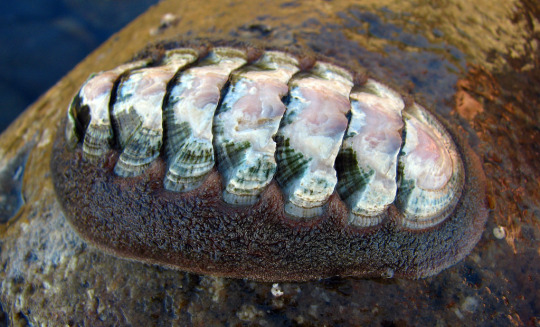
(image id: a chiton. It is an oval animal with a flat shell composed if 8 overlapping green and white plates. Surrounding the shell is brown, soft tissue)
Chitons are similar in appearance and ecology to limpets, though they are not closely related. The shell of a chiton is made of 8 plates called valves. Valves are the name of any mollusk shell that is divided into multiple pieces. Most mollusk shells are made of one continuous piece and the only ones that have valves are the chitons, bivalves, and a few weird snails. The valves of a chiton overlap slightly, allowing for flexibility while still giving protection. Chitons can curl up into balls and flex backwards to move over concave surfaces that limpets wouldn't be able to. The valves are imbedded in and held together by a thick, muscular ring called the girdle that encircles the body. In most species, only the sides of the valves are covered by the girdle, leaving the rest exposed to the water. A few species cover more or all of the valves with the girdle. When a chiton dies and the girdle decays, the valves will separate. Individual valves sometimes wash up on beaches and are called butterfly shells due to their v-shaped appearance. The shell is used for defense. Chitons can curl up in a ball when not attached to a rock. If one is attached to a rock, it can suction on, presenting predators with no good way to attack its soft underbelly. Some species have spikes, bristles, or other ornaments on their valves and girdles that can provide additional protection.
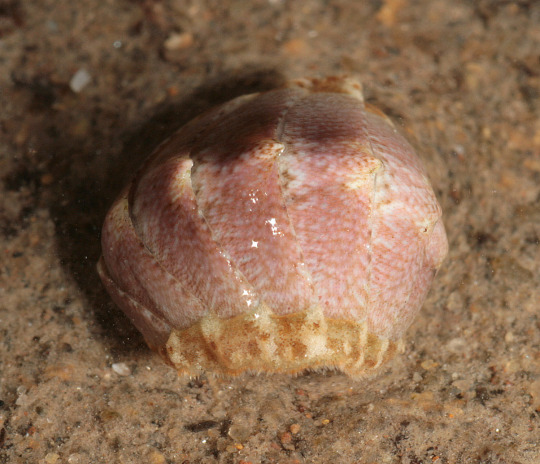
(image: a chiton curled up into a ball. Its plates are pale pink and its girdle is white and brown)
Underneath the shell, the chiton's body is soft. It consists largely of a muscular foot that is used for movement. To either side of the foot is the mantle cavity, which consists of channels filled with gills that water is pulled through. There is no distinct head, but a mouth is present on the front end. Inside the mouth is the radula, a tongue-like appendage that is covered in teeth. The teeth are special because they are coated in magnetite, a very hard magnetic mineral that has iron as one of its main ingredients. While the metal is used to reinforce the teeth and keep them from wearing out (in fact, the chiton Chaetopleura apiculata has the hardest teeth of any known animal), it may also be used for magnetoreception. This is when an animal can sense magnetic fields. It is possible that the magnetic teeth of chitons can sense the Earth's magnetic field and help with navigation and migration. Most chitons are herbivores or omnivores that feed on algae, bryozonans, diatoms, and other tiny rock-dwellers by scraping at rocks with their radulae. Some are carnivores that target barnacles and can even eat small crustaceans and fish. They often hunt by holding the front ends of their girdles up in the water. Should an animal mistake it for shelter, the chiton will clamp down on them. Food is forced through the esophagus by a current of mucus moved by cilia.

(image: the underside of a chiton. it is oval and orange all over. Two groves filled with brown gill filaments go down each side of the body, encircling a central foot. The mouth is visible as a small hole on one end)
When it comes to senses, chitons have a few options. Like their gastropod cousins, chitons have a chemosensory organ called the subradular organ used for smell and their feet and girdles are full of sensory nerves. They also have special organs called aesthetes. These consist of light-sensing cells that are just below the surface of the shell. The aesthetes are not true eyes, only being able to distinguish light from dark, though they can tell the difference between a shadow and the effects of clouds moving over the sun. Some species use collections of aesthetes to form simple eyes called shell eyes. Unlike the aesthetes, the shell eyes can form images, though Chitons do not have nerve structures needed to form a high resolution image. Shell eyes are distinct from those of any other animal in their structure. Most animals have eye lenses made of protein-based structures, but chiton lenses are crystalline, made of aragonite, the same material that makes up the shell of most mollusks. Each shell eye is compound. The shell eyes are almost certainly used for predator detection. Fossil chitons have been found dating back to the Cambrian period. but shell eyes have only been found in fossils from less than 10 million years old. This likely makes chitons the most recent animal group to have evolved true eyes. Chiton eyes have also been found to work both in water and air, which is tricky due to the way light travels differently through both mediums.
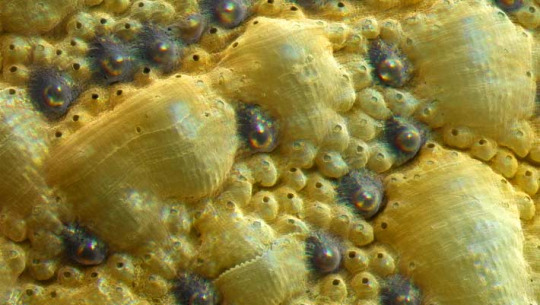
(image: a close-up of a chiton's shell showing the eyes. The shell is yellow and lumpy with the eyes visible as darker, almost black lumps)
The majority of chitons live in intertidal or sub-tidal areas, making them a shallow water group. A few species have been found living in much deeper water, up to 2,000 meters down. Chitons have been known to have homing behavior as they will consistently return to a safe spot after feeding. How they do this is unknown. Sensing the magnetic field of the Planet may play a role, though it is also possible that they lay down chemical trails to find their way home. Chitons are broadcast spawners, with both males and females releasing gametes into the water. Larvae can swim for a while before moving to the substrate.

(image: microscope images of a chiton larva at 4 different developmental stages. It begins as a round blob ringed with hair-like cilia. As the animal develops the cilia recede and the animal elongates, with a distinct foot becoming visible. source)
I will close by bringing up an animal I only learned about recently but has rapidly become one of my favorite weird beasts. This is Cryptochiton stelleri. Its common name is the gumboot chiton, but some people call it the wandering meatloaf, which is objectively the best name ever. It is the largest chiton, growing up to 36 cm (14 in) and 2 kg (4.4 lbs). Its girdle completely covers its shell, which does make it look more like a meatloaf. They can live up to 40 years and are the first known animals to have the mineral santabarbarite in their bodies. They live throughout the north pacific and have been used as a food source by many different cultures. There may be a lot of bad stuff in the world, but if things get too bad, just remember that we live on the same planet as an animal called the wandering meatloaf that can live for 40 years and has a tongue covered in magnetic teeth.

(image: a wandering meatloaf. It is an ovoid animal with red-orange tissue covering the body. Its shell is not visible, but the ridges where each plate overlaps can be seen through the girdle)
#wet beast wednesday#chiton#wandering meatloaf#gumboot chiton#mollusk#molluscs#marine biology#biology#zoology#ecology#animal facts#marine animals
431 notes
·
View notes
Text
Small, shelled, and unassuming, chitons have eyes unlike any other creature in the animal kingdom.
Some of these marine mollusks have thousands of bulbous little peepers embedded in their segmented shells, all with lenses made of a mineral called aragonite. Although tiny and primitive, these sensory organs called ocelli are thought to be capable of true vision, distinguishing shapes as well as light.
Continue Reading.
331 notes
·
View notes
Text






Half Moon Bay, CA
#AAAAAAAAAHHHH#marine bio#sea star#starfish#ochre sea star#spotted dorid#sea anemone#gumboot chiton#chiton#nudibranch#sea lemon#abalone shell#kelp crab#tide pools#tidal pools#marine biology#oceancore#marine life#pacific ocean#crab#seashore#there are many benefits to being a marine biologist#ecology#seashell#🩻#seekdestr0y#my photos
325 notes
·
View notes
Text
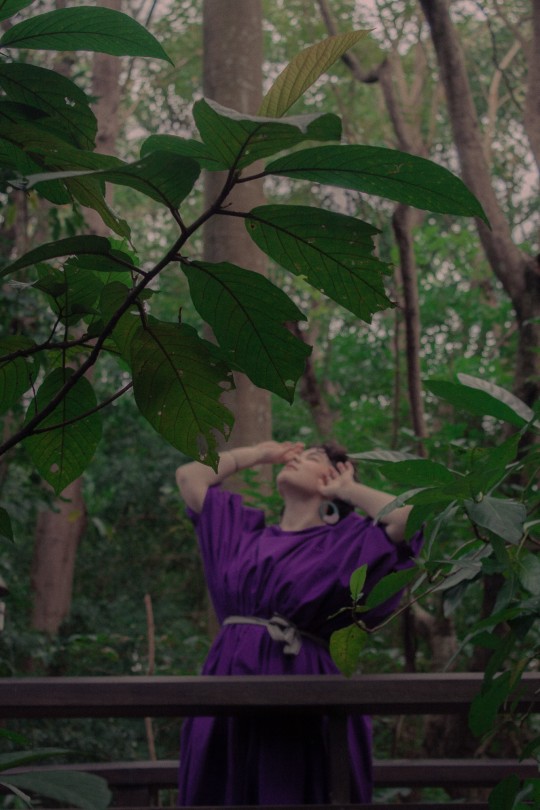


Gender: slay Roman senator
[taken by @/raeluira at Taipei Botanical Gardens, handmade]
#TRY TO POST ROUND 3#I'll post knife pics tomorrow#julius caesar#ides of march#chiton#roman#cosplay#historically inspired#photography#lightroom#taipei
73 notes
·
View notes
Text

Mossy chiton
#chiton#animals#wildlife#animal#forest#nature#beauty#photographers on tumblr#artists on tumblr#original photographers#original photography#photography#aesthetic#Washington#pnw#westcoastbestcoast#art#vsco#pacific northwest#explore#travel#cottagecore#p
65 notes
·
View notes
Text
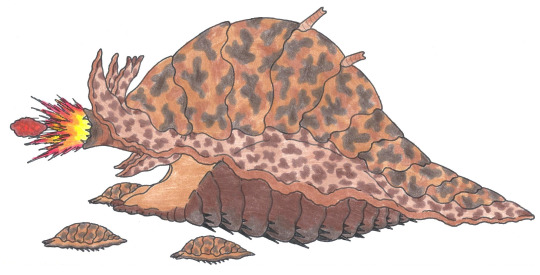
Going out to the canyons and badlands guarantees beautiful views and memorable trips. The majesty of time worn rock, the incredible colors found in their many layers! Get a look from up high, and you see a landscape that is sculptures of nature itself! To sit there and take it all in, soaking up the sights, listening to the wind howl through the rocky canyons and enjoying the serenity of the wor- BAM! The jarring sound of an explosion echoing through the air! The peaceful quiet is randomly broken up by these startling blasts, ringing through the channels and chasms. The first time people hear it, they are quick to panic and think there is an attack happening. Some sneaky group of bandits blasting powder kegs or volatile magic or something! It certainly startles you every time! Even when you know it is bound to occur eventually, it will still catch you off guard! These loud bursts are rare and sporadic, but there is no way to ignore them if you are anywhere near the region! While some think bandits or loud mining, it is actually the result of a native resident of these lands dealing with some trouble. Someone is agitating them, which leads to quite the ruckus and quite the mess!
The species I am talking about is the Blast Cap Scutumback, though most people stick to calling them Blast Caps. As the name points out, they are a member of the Scutumback family, a group of mollusks known for their armor plating and flattened shape in their juvenile stages, which leads to the comparison of them and a shield. Blast Caps live in arid places, typically where rocks are aplenty and water is rare. Fitting that they live in such stony places, as they both blend in with rocks and move about as fast as one too. Blast Caps live at a snail's pace, slowly crawling about with a muscular foot that is hidden by their girdle. Now would be the part where I talk about their day-to-day lives and their incredible behaviors, but crawling about and eating pretty much covers all they really do. Blast Caps have no interest in rich social lives or finding odd ways to pass their time. It is essentially "eat until the food is gone" and then "move until you find more food." While pretty simple, you can't argue with results!
Blast Caps do not eat meat or plants, instead going for a troll's diet. Rocks, minerals and metals are their meals of choice, and they use a powerful toothy radula to scrape away at stone for sustenance. The process is very slow, but I already said that they live a very slow life. As their radula etches the rock, they feed on the dust and flakes that come off, running it through an odd digestive system to extract nutrients from it. Some suggest that they also feed on lichens and moss, as those have been seen on rocky surfaces they chew on. However, we do not know if they specifically target these food sources or just so happen to eat them merely because they grow on the food they actually want. A Blast Cap will spend days sitting in one place, chiseling away at the stone until they deplete whatever substance they want from it. Once it is gone, they move on, leaving a distinctive wear mark on the rock that lets you know who is responsible!
While sitting around and eating rocks doesn't sound like the most thrilling species to describe, things get much more interesting when you consider the substances they build up in their guts. The Blast Cap's love for specific minerals and stones winds up making a dusty mixture in their bodies that they add to potent fluids of their own, which winds up creating an explosive compound. It may seem like a real bad idea to create explosive fluids in your own guts, but the Blast Cap's creation is rather stable, only detonating when exposed to flame or sparks. When stored in the body, its own internal fluids and organs do well to prevent any accidental detonations from occurring. When danger approaches, that is when the liquid is put into use, and to powerful effect! Blast Caps will secrete this fluid in different ways, then use flint-and-steel-like setups in their anatomy to create the triggering spark. Their extra "teeth" and radula are capable of being scraped together to make sparks, or their armor plating may be rubbed together to do the job.
How they utilize this defense varies by age, as the juveniles have one trick and the adults have another. When Blast Caps are young, they are much smaller and flatter, and their coloration helps them blend in with the stone. It is good for hiding, but some predators can sniff them out, or some oblivious beast may accidentally step on them! When a young Blast Cap senses a presence getting too close for comfort, their armor plates will shift to reveal fluid spraying pores. These orifices are tied to their explosive liquids, which can be released in a faint mist. They will only eject the weapon when pressure is put onto their armored bodies, be it a probing predator or a heavy misplaced boot. When they feel their body being touched, they release a small cloud of explosive mist and slam their plates shut, making a spark and then BOOM! While the area of effect is small, the explosion has a punch to it and it can severely mess up a snout or foot. While their armor plating protects them from this blast, those who agitate them are not so lucky. Predators can have a nose blown off, or even be blinded due to damage to the eyes. Beasts who step on them by accident will have chunks of flesh destroyed and nasty burns. Human-sized hikers often straight up lose a foot, having it blown to pieces due to this blunder. Though the young Blast Caps are small and weaker compared to the adults, some would argue they are more dangerous due to how easy it is to miss them and not realize you are walking through a living minefield.
When a Blast Cap gets old, their bodies fill out, almost inflating into a more hunched shape. Two large storage organs develop on their sides, for holding explosive fluid and small stony chunks for digestion. Their mouth parts become more flexible, allowing them to rotate it from its usual downward position up so that it points outward. This helps them eat things at different heights, or reach places where their bulkier body cannot climb. It also makes for a handy weapon when threats approach. While they can still release an explosive cloud around them, this wastes far more fluid due to their larger size requiring more to fully cover them. Instead, when they sense danger, they move their mouths upward and point it at the enemy. They will take a chunk of stone from their gut and bring it to their throat, along with a gob of explosive fluid. If their foe doesn't retreat, they will scrape tooth and radula together to make a spark and ignite the liquid sitting behind the rock. In an instant, their mouth erupts in a plume of light and smoke, and the stone is launched out at incredible speeds. This projectile is shot out faster than a rock sling could throw it, and it can do serious damage to those it hits. Bone shatters easily and armor is damaged beyond repair. If it hits you in the chest, your ribcage is busted and probably embedded in some important organs. If it hits you in the head, well, you won't realize it until you wake up in your afterlife.
To make matters worse, is that sometimes the rock is porous and winds up soaking in some explosive fluid. When launched, it will shatter when it hits its target or the environment, releasing a cloud that can be triggered by a single spark. Folk scrambling for their weapons or falling with armor hitting stone may accidentally create this trigger, and blow themselves to pieces without knowing their mistake. Needless to say, not many animals choose to prey on the Blast Cap, as the cost is massive if they screw up. However, some crafty birds, like ravens, have figured out a way to prey on juvenile Blast Caps. They pick up small rocks and debris in their talons or beak, then fly overhead and drop it atop the Scutumback. This "attack" will cause the Blast Cap to explode its defense, but the birds are far away from danger. They will then drop more rocks again and again until the Blast Cap stops detonating, as its fuel will have been depleted. Then the birds can swoop in to attack, knowing the young mollusk has no weaponry to fight back.
With the dangers that can come from an exploding mollusk, it should be obvious that locals are very careful around them. Areas that are heavily populated by Blast Caps will have warning signs around them (not that those can truly ward off dumb tourists). When traveling these places, people walk slowly and always keep an eye on the ground in front of them, as a single misstep can cost you a leg. While these areas are notoriously dangerous, the native people have found ways to benefit from them. Places where young Blast Caps are plentiful will be scouted out, and then hunters on horseback would go out to track down a nearby herd of game. With incredible coordination, they would scare the animals into a stampede, and direct their escape route towards Blast Cap territory. The thundering hooves would agitate the mollusks and they would prepare to explode. As the herd tramples through, they would trigger the Blast Caps, resulting in explosions, lost limbs and fatal tripping. In less than a minute, dozens of ungulates could be downed by these living traps, allowing the hunters to slowly creep in to collect the freshly exploded meat. It should be noted that most Blast Caps actually survive this crazy tactic, as they are very hardy and can handle being stepped on or trapped beneath a fallen beast. It should also be noted that this hunting tactic was only used in hard times when an entire village needed food, as it can be pretty wasteful with how much meat gets blown to mush and also the state of your food is pretty rough by the time you carve it up. No fine steaks or flanks to be found here, just messy ground beef.
Also, this same tactic has been used on invading forces, where natives tricked enemy armies to travel through Blast Cap territory, using their ignorance of the local fauna against them. One wrong step and the whole force is thrown into chaos, as people panic, flee and trample over more Blast Caps. While casualties would be low due to the small area of these blasts only taking out legs, the effects could be crippling to an army, now laden with wounded and mutilated, while also worrying about where the danger is. It is a clever strategy, I give them that, but it does make me worried anytime I am hiking in these areas. I am careful in my walking and mindful of my step, but then I think to the chaos of these hunts and attacks, and think of how a tumbling rock or a dropped canteen could set off a chain reaction that would turn me to mulch! It hasn't happened yet thankfully! But I guess you know that because I am alive and writing this entry....
Chlora Myron
Dryad Natural Historian
-------------------------------------
"Blast Cap Scutumback"
42 notes
·
View notes
Text
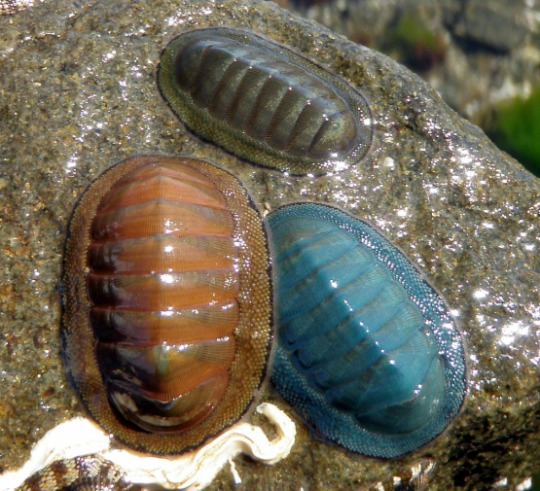
Blue-Green Chiton (Chiton glaucus)
Family: Typical Chiton Family (Chitonidae)
IUCN Conservation Status: Unassessed
Like other chitons, the Blue-Green Chiton is a heavily armoured eyeless mollusc related to marine snails which relies on its strong aragonite-based shell to defend it from potential predators as it slides slowly along on a frilly "foot", clinging to surfaces beneath it as it travels using a layer of thin-yet-sticky mucus and the suction-cup-like shape formed by the foot's frilly rim. Although they lack any conventional eyes, the 8 armoured plates of a chiton contain numerous lens-like structures (also made of aragonite) which focus light onto a retina-like membrane, allowing the chiton to perceive light and possibly basic shapes above them in order to identify potential predators, giving them an opportunity to grip more tightly onto the surface beneath them to prevent them from being flipped over to expose their unarmoured underbelly (although if this does happen they are also able to curl up in order to leave as little of their foot exposed as possible.) Found in coastal and estuarine waters surrounding New Zealand and Tasmania, Blue-Green Chitons spend much of the day concealed in rocky cracks or under large stones and emerge at night to feed, using a spiny tongue-like structure that extends from their tiny downwards-facing mouths to scrape algae off of the rocks beneath them. The name of this species refers to the variety of colours seen on the shells of different individuals; while typically dull green, individuals with blue, yellow or pale brown shells are also frequently reported.
-------------------------------------------------------
Image Source: Here
Also see here for a very cool video explaining how chiton "eyes" work.
#Chiton#chiton#chitons#zoology#biology#malacology#animal#animals#marine animals#marine wildlife#marine biology#mollusc#molluscs#mollusk#mollusks#Oceanian wildlife#Blue-Green Chiton#new zealand wildlife#australian wildlife#wildlife#nature
31 notes
·
View notes
Note
I've seen one post of yours, ever, and you seem swell. You might say: "you've seen one post of mine, that's not enough to make a judgement call!" but I figure, hanons (hate anons) see one post of you and *they* think that's enough to make a judgement on you. So I should get to do one, too. (And if you still dismiss this opinion, that's fair. I only hope it helps you dismiss the nasty opinions of hanons as well)
Thank you so much! Honestly, making a reasoned judgement based on one post is better than just going "amab enby bad", and hey, now you're seeing a second post of mine that I'm writing in reply!
Because I always feel the need to share cool creatures in the replies, you just got yourself a pair of colorful sea roombas (chitons)!
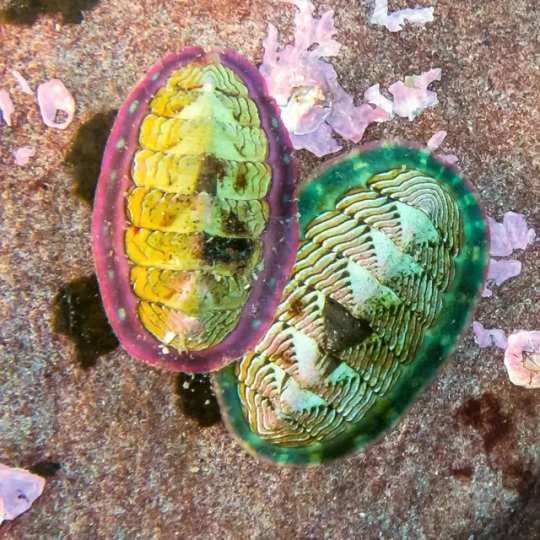
#chiton#i call them sea roomba bc they're just sliding around on the sea floor and cleaning stuff#they're ancient molluscs with an articulated shell they're so cool
14 notes
·
View notes
Text
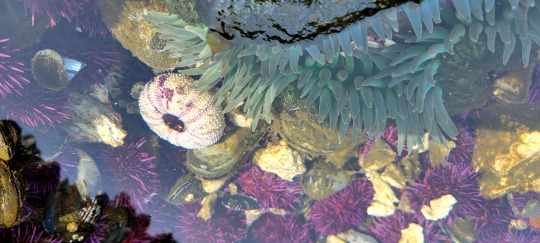



marine life at salt creek
#tide pools#marine biology#chiton#anemone#snails#pnwlife#pacific northwest#nature photography#nature#pnwonderland#mine
20 notes
·
View notes
Note
Speculative bio question, if an isopod like creature ate rocks as it's main diet or as a supplement to promote shell health, what would be the most likely candidate for making its shell tougher besides calcium?
I don't need to speculate--chitons already use argonite to fortify their shells, and scaly-foot gastropods use iron!
45 notes
·
View notes
Text
Galaxy dragon time! Their name is Aphelion!

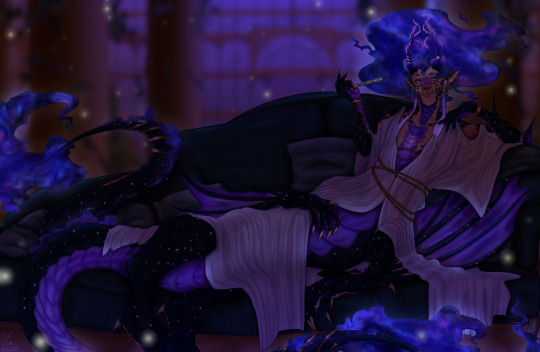
#shadow alpha 02 draws#drawing#art#digital drawing#digital art#oc#dragon#dragon oc#monster#monster oc#dragon boy#monster boy#monster boy oc#space#galaxy#aphelion#chiton#digital illustration#character art#character illustration
267 notes
·
View notes
Text
He has the body of a plump goddess of beauty from way, way back in the day, and I love it. I need to dress those childbearing hips up in a Greek chiton.
#womanizing this man#greek mythology#chiton#greek gods#the man#me devouring#him#goddess#lol#funny#humor#haha#text post#original post#textpost#shit post#shitpost
12 notes
·
View notes
Text
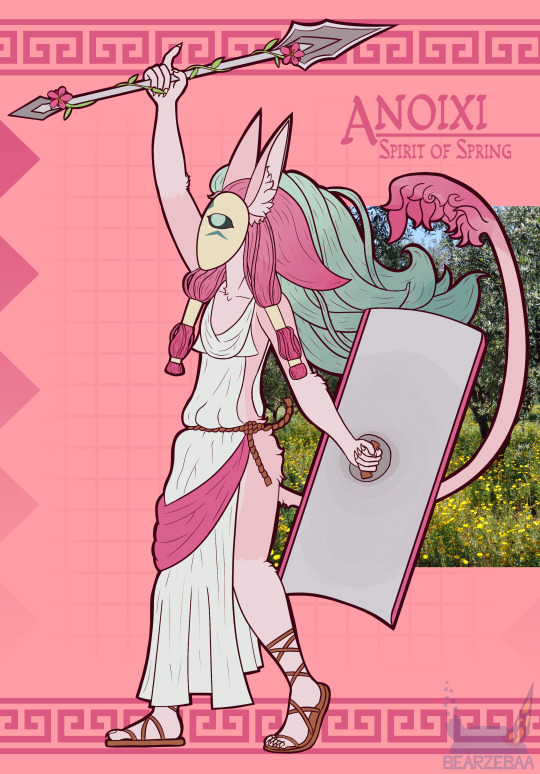
Anoixi - Spirit of Spring
Spirit of Spring, often referred to as Anoixi is an embodiment of one of the four seasons in the Shattered World. Their depiction, like every other season, varies from person to person, culture to culture etc. Some might depict them as a man, some as a woman, some as neither or both; some depict them as slender or muscular, or formless; more human-like, more beastkin-like, or as an indescribable horror.
Whatever the depiction, however, some things remain mostly the same - the mask, pink and teal color, as well as their signature javelin and shield."
This has to be the quickest concept to full art process I've ever done and I'm so proud of it aaaaa
#original character#my art#artwork#digital art#keyart#Anoixi#Spirit of Spring#Spirit of the Season#Spirit of the Seasons#fluffy#furry#anthro#shield#spear#ancient rome#ancient greece#chiton#sandal#sandals#robe#javelin#mask
10 notes
·
View notes
Text

Lined chiton (Tonicella lineata)
By: Jeff Foott
From: The Complete Encyclopedia of the Animal World
1980
#chiton#mollusk#invertebrate#1980#1980s#Jeff Foott#The Complete Encyclopedia of the Animal World (1980)
45 notes
·
View notes
Text

Mossy chiton
#chiton#bug#bugs#macro#animals#wildlife#animal#forest#nature#beauty#photographers on tumblr#artists on tumblr#original photographers#original photography#photography#aesthetic#Washington#pnw#westcoastbestcoast#art#vsco#pacific northwest#explore#travel#cottagecore#p
101 notes
·
View notes